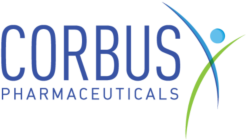 Emerging drug development company Corbus Pharmaceuticals Holding, Inc., which is currently working to commercialize therapeutic solutions for rare, life-threatening inflammatory and fibrotic diseases, recently presented its financial results for 2014. The company posted a loss of $2,540,000 — common for emerging drug developers in the process of gaining FDA approval for a therapy — and is continuing efforts to bring their lead product candidate Resunab to market as a treatment for cystic fibrosis (CF) and diffuse cutaneous systemic sclerosis (scleroderma).
Emerging drug development company Corbus Pharmaceuticals Holding, Inc., which is currently working to commercialize therapeutic solutions for rare, life-threatening inflammatory and fibrotic diseases, recently presented its financial results for 2014. The company posted a loss of $2,540,000 — common for emerging drug developers in the process of gaining FDA approval for a therapy — and is continuing efforts to bring their lead product candidate Resunab to market as a treatment for cystic fibrosis (CF) and diffuse cutaneous systemic sclerosis (scleroderma).
During the past year, Corbus registered a net loss of about $2,540,000, equating to a $0.13 net loss per diluted share, while the year before, the company had reported a $602,000 net loss, the equivalent to a net loss per diluted share of $0.09. Corbus also reported a total of $6,262,000 in cash and equivalents by the end of the year, which the company believes is enough to conduct its operations and fulfill its capital requirements for 2015.
The company is focused on continuing the studies on Resunab, a novel synthetic oral therapy designed as a pro-resolving mediator drug with anti-inflammatory and anti-fibrotic proprieties, which is expected to become a viable treatment for both CF and scleroderma. Corbus has also presented its expected milestones for 2015, focused primarily on the continued development of Resunab.
“We believe that Resunab’s novel and unique mechanism of action that acts by resolving inflammation has the potential to have a significant therapeutic impact on patients suffering from these diseases,” said the CEO of Corbus, Yuval Cohen, PhD. “We expect to continue to build forward momentum in the first half of 2015 with the initiation of our Phase 2 clinical trials with Resunab. We are gratified to see that our hard work has been generating tangible results and look forward to a promising 2015.”
[adrotate group=”3″]
For the next year, the company is planning on filing a clinical protocol with the U.S. Food and Drug Administration (FDA) under its Investigational New Drug designation for Resunab as a therapy for CF in order to begin a phase 2 clinical trial. Corbus also aims to start a phase 2 clinical trial of Resunab with scleroderma patients, and submit an application for the FDA’s Orphan Drug Designation for Resunab as a therapy for both CF and scleroderma. The last milestone for the company will be to gain an up-listing on the NASDAQ Stock Market.
In addition, the company has also highlighted some of the most important achievements from 2014, including the FDA’s Investigational New Drug application filed for Resunab’s phase 2 protocol for scleroderma patients, and the nomination of new chief medical officer Barbara White, M.D., a leading board-certified rheumatologist, scleroderma expert and pharmaceutical industry veteran, as well as a new director of clinical research and operations, Scott Constantine, M.S., who served in the same position at Insmed.
“In the fourth quarter, we made good progress on the operational and regulatory fronts and believe 2014 was a springboard year by establishing the building blocks for Corbus to develop innovative therapies that target rare, life-threatening chronic inflammatory-fibrotic indications. We have assembled an experienced team of industry veterans that are working together to prepare and execute our clinical programs for Resunab,” added Cohen.
The CEO of the company also recently presented development updates for Resunab at the 17th Annual BIO CEO & Investor Conference. The effectiveness of the compound, which works by binding the CB2 receptor on immune cells and triggering the inflammatory resolution process in order to shut the chronic inflammation off, has already been studied in inflammation and fibrosis pre-clinical and phase 1 clinical studies, revealing a favorable safety profile consistent with encouraging potential.

